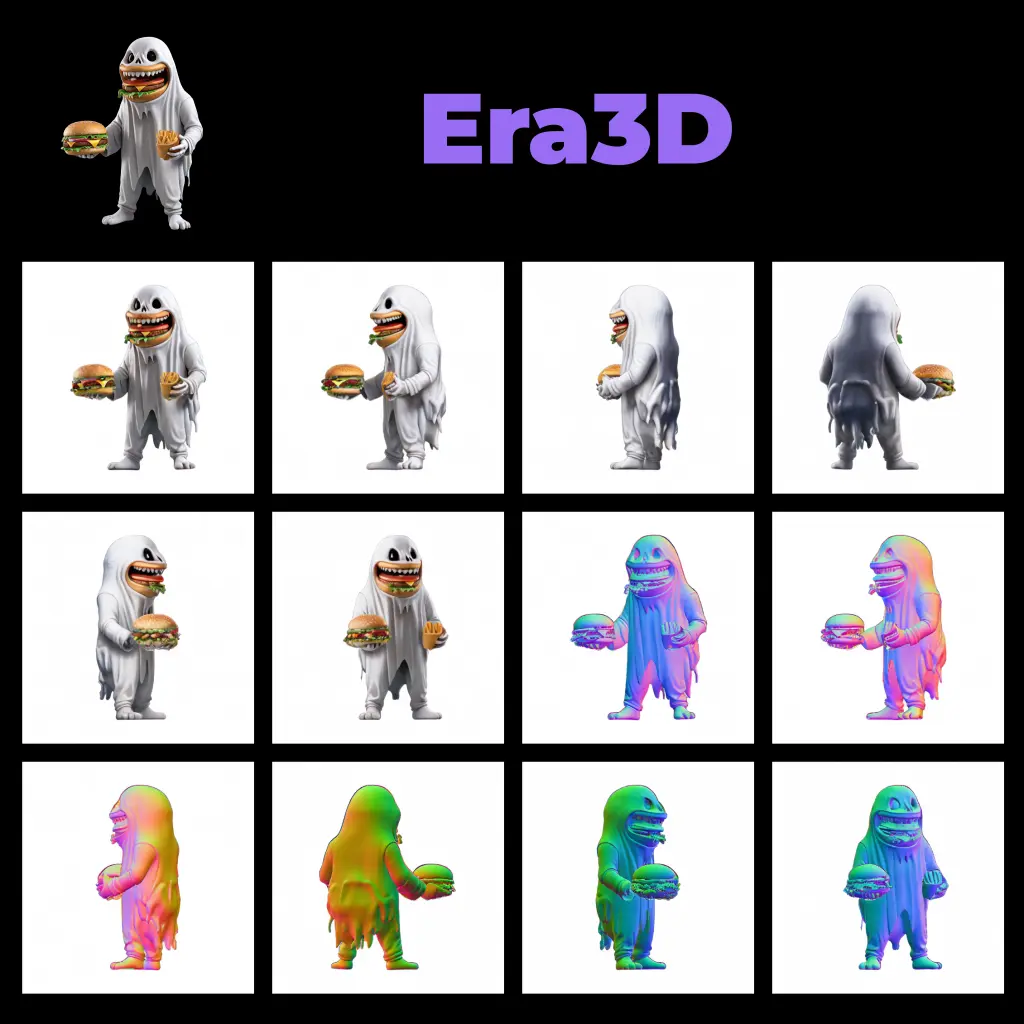ComfyUI Node: V-Express Sampler
V_Express_Sampler
CategoryV-Express
tiankuan93 (Account age: 3235days) Extension
V-Express: Conditional Dropout for Progressive Training of Portrait Video Generation Latest Updated
2024-06-26 Github Stars
0.11K
How to Install V-Express: Conditional Dropout for Progressive Training of Portrait Video Generation
Install this extension via the ComfyUI Manager by searching for V-Express: Conditional Dropout for Progressive Training of Portrait Video Generation- 1. Click the Manager button in the main menu
- 2. Select Custom Nodes Manager button
- 3. Enter V-Express: Conditional Dropout for Progressive Training of Portrait Video Generation in the search bar
Visit ComfyUI Online for ready-to-use ComfyUI environment
- Free trial available
- 16GB VRAM to 80GB VRAM GPU machines
- 400+ preloaded models/nodes
- Freedom to upload custom models/nodes
- 200+ ready-to-run workflows
- 100% private workspace with up to 200GB storage
- Dedicated Support
V-Express Sampler Description
Facilitates video content generation using audio and visual inputs for AI artists, automating data integration for coherent outputs.
V-Express Sampler:
The V_Express_Sampler node is designed to facilitate the generation of video content by leveraging a combination of audio and visual inputs. This node integrates various elements such as audio waveforms, keypoint data, reference images, and model paths to produce high-quality video outputs. It is particularly useful for AI artists looking to create synchronized audiovisual content, as it allows for detailed control over the sampling process, including parameters like image size, frame rate, and guidance scales. The node's primary function is to streamline the video generation process by automating the integration of multiple data sources, ensuring that the final output is both coherent and visually appealing.
V-Express Sampler Input Parameters:
v_express_pipeline
This parameter specifies the pipeline to be used for the V_Express process. It is essential for defining the sequence of operations that will be applied to the input data.
vexpress_model_path
This parameter indicates the file path to the model that will be used for generating the video. The model path is crucial as it determines the underlying architecture and capabilities of the video generation process.
audio_path
This parameter specifies the file path to the audio file that will be used as input. The audio file provides the auditory context for the video, influencing the synchronization and overall feel of the generated content.
kps_path
This parameter indicates the file path to the keypoint data, which is used to guide the motion and positioning of elements within the video. Keypoint data is essential for ensuring that the generated video accurately reflects the intended movements and actions.
ref_image_path
This parameter specifies the file path to a reference image that will be used to guide the visual style and content of the video. The reference image helps in maintaining visual consistency and can be used to match specific aesthetic requirements.
output_path
This parameter indicates the file path where the generated video will be saved. It is important to specify a valid and accessible path to ensure that the output can be easily retrieved and utilized.
image_size
This parameter defines the dimensions of the output video in terms of width and height. It is important for determining the resolution and aspect ratio of the final video.
retarget_strategy
This parameter specifies the strategy to be used for retargeting the content within the video. Different strategies can be applied to achieve various effects and ensure that the content fits well within the specified dimensions.
fps
This parameter defines the frames per second (FPS) for the output video. The FPS value is crucial for determining the smoothness and temporal resolution of the video.
seed
This parameter specifies the random seed to be used for the generation process. The seed value ensures reproducibility, allowing the same video to be generated multiple times with identical results.
num_inference_steps
This parameter indicates the number of inference steps to be performed during the video generation process. More steps generally lead to higher quality outputs but may increase the computational time.
guidance_scale
This parameter defines the scale of guidance to be applied during the generation process. It influences the strength of the conditioning signals, affecting the overall coherence and quality of the video.
context_frames
This parameter specifies the number of context frames to be used in the generation process. Context frames provide additional temporal information, helping to improve the continuity and consistency of the video.
context_stride
This parameter defines the stride length for the context frames. It determines how the context frames are sampled and can impact the temporal resolution and smoothness of the video.
context_overlap
This parameter specifies the amount of overlap between consecutive context frames. Overlapping frames can help in maintaining continuity and reducing artifacts in the generated video.
reference_attention_weight
This parameter defines the weight of the reference image in the attention mechanism. It influences how strongly the reference image affects the generated content, allowing for fine-tuning of the visual style.
audio_attention_weight
This parameter specifies the weight of the audio input in the attention mechanism. It determines the influence of the audio on the generated video, affecting synchronization and audiovisual coherence.
save_gpu_memory
This boolean parameter indicates whether to save GPU memory during the generation process. Enabling this option can help in managing computational resources, especially on systems with limited GPU memory.
do_multi_devices_inference
This boolean parameter specifies whether to perform inference across multiple devices. Enabling this option can help in distributing the computational load and speeding up the generation process.
V-Express Sampler Output Parameters:
LATENT
The output of the V_Express_Sampler node is a latent representation of the generated video. This latent output can be further processed or directly converted into a video file. It encapsulates the combined information from the audio, keypoints, reference image, and other input parameters, resulting in a coherent and high-quality video output.
V-Express Sampler Usage Tips:
- Ensure that all file paths (model, audio, keypoints, reference image, and output) are correctly specified and accessible to avoid file not found errors.
- Adjust the
guidance_scaleparameter to fine-tune the balance between the conditioning signals and the generated content for optimal results. - Use a consistent
seedvalue if you need to reproduce the same video output multiple times. - Experiment with different
retarget_strategyoptions to achieve the desired visual effects and content fitting within the video frame. - Enable
save_gpu_memoryif you are working on a system with limited GPU resources to prevent memory overflow issues.
V-Express Sampler Common Errors and Solutions:
FileNotFoundError: [Errno 2] No such file or directory
- Explanation: This error occurs when one or more of the specified file paths (model, audio, keypoints, reference image, or output) are incorrect or inaccessible.
- Solution: Double-check the file paths to ensure they are correct and that the files exist at the specified locations.
ValueError: Invalid parameter value
- Explanation: This error occurs when one or more input parameters are set to values outside their acceptable ranges.
- Solution: Verify that all input parameters are within their specified ranges and adhere to the expected formats.
RuntimeError: CUDA out of memory
- Explanation: This error occurs when the GPU runs out of memory during the video generation process.
- Solution: Enable the
save_gpu_memoryoption or reduce theimage_sizeandnum_inference_stepsparameters to lower the memory requirements.
TypeError: Expected input type
- Explanation: This error occurs when an input parameter is of an incorrect type.
- Solution: Ensure that all input parameters are of the correct type as specified in the documentation (e.g., integers for
seed,steps, etc., and strings for file paths).
AssertionError: Invalid context frame configuration
- Explanation: This error occurs when the
context_frames,context_stride, andcontext_overlapparameters are set to incompatible values. - Solution: Adjust the
context_frames,context_stride, andcontext_overlapparameters to ensure they are compatible and logically consistent.
V-Express Sampler Related Nodes
RunComfy is the premier ComfyUI platform, offering ComfyUI online environment and services, along with ComfyUI workflows featuring stunning visuals. RunComfy also provides AI Playground, enabling artists to harness the latest AI tools to create incredible art.



